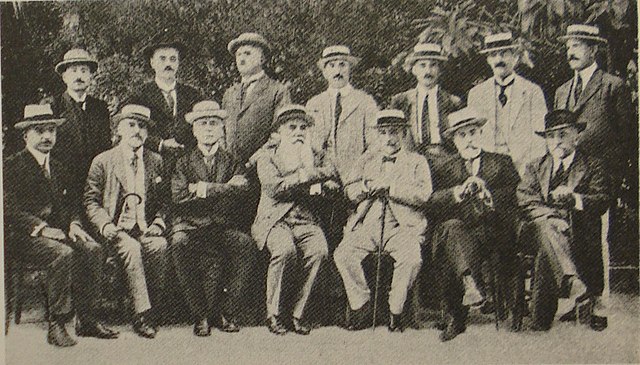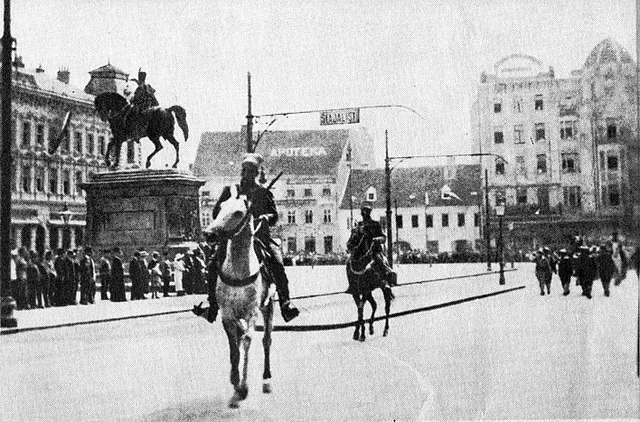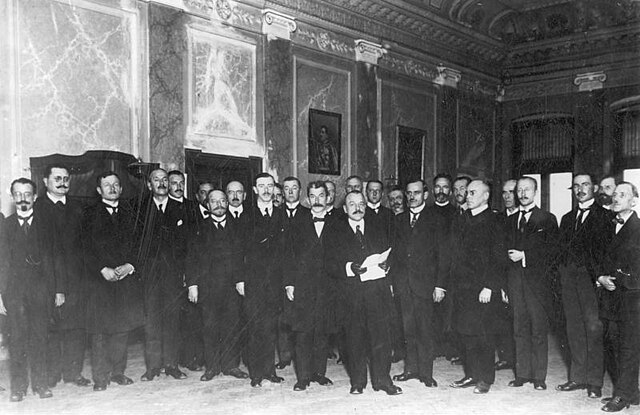The Yugoslav Committee was a World War I-era, unelected, ad-hoc committee that largely consisting of émigré Croat, Slovene, and Bosnian Serb politicians and political activists, whose aim was the detachment of Austro-Hungarian lands inhabited by South Slavs and unification of those lands with the Kingdom of Serbia. The group was formally established in 1915 and it last met in 1919, shortly after the breakup of Austria-Hungary and the establishment of the Kingdom of Serbs, Croats and Slovenes, which was later renamed Yugoslavia. The Yugoslav Committee was led by it president the Croat lawyer Ante Trumbić and, until 1916, by Croat politician Frano Supilo as its vice president.
Yugoslav Committee photographed in Paris in 1916
Ante Trumbić led the Yugoslav Committee in the run-up to creation of Yugoslavia
Frano Supilo co-founded the Yugoslav Committee with Ante Trumbić
Participants of the June–July 1917 talks that resulted in the adoption of the Corfu Declaration
The Kingdom of Yugoslavia was a country in Southeast and Central Europe that existed from 1918 until 1941. From 1918 to 1929, it was officially called the Kingdom of Serbs, Croats, and Slovenes, but the term "Yugoslavia" was its colloquial name due to its origins. The official name of the state was changed to "Kingdom of Yugoslavia" by King Alexander I on 3 October 1929.
Celebrations in Zagreb during the formation of the National Council of the State of Slovenes, Croats and Serbs, October 1918
Serbian Army in Zagreb's Ban Jelačić Square in 1918
Delegation of the National Council of the State of Slovenes, Croats and Serbs led by Ante Pavelić reading the address in front of regent Alexander, 1 December 1918
Mihajlo Pupin, Serbian physicist and physical chemist. He influenced the final decisions of the Paris Peace Conference when the borders of the Kingdom were drawn.








